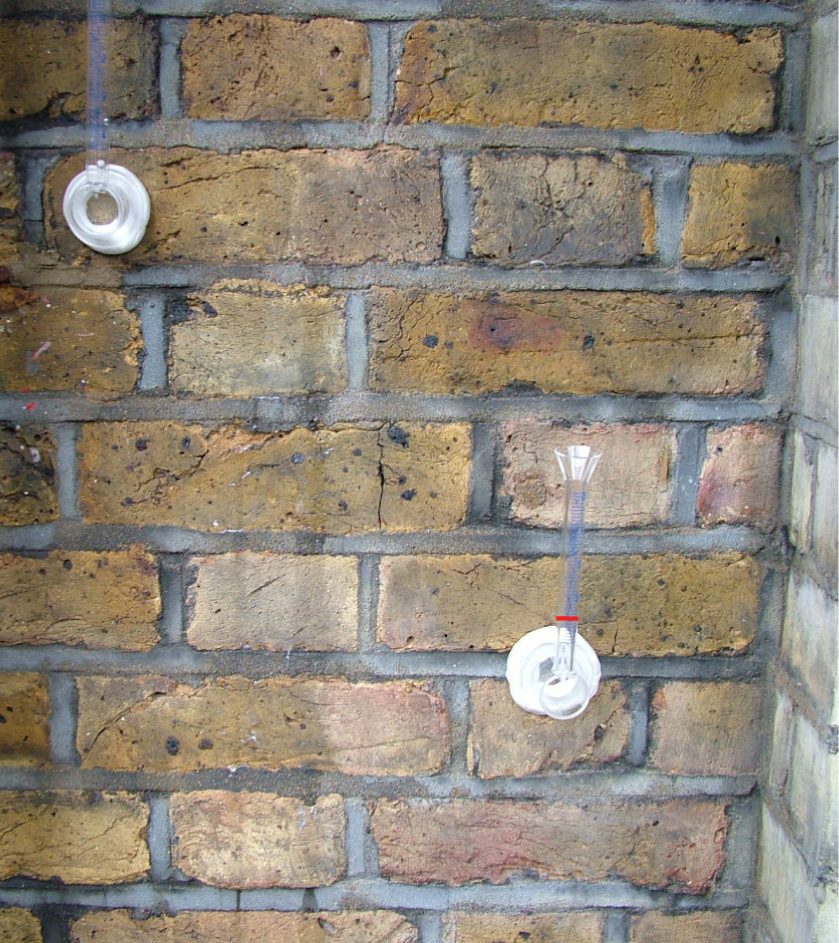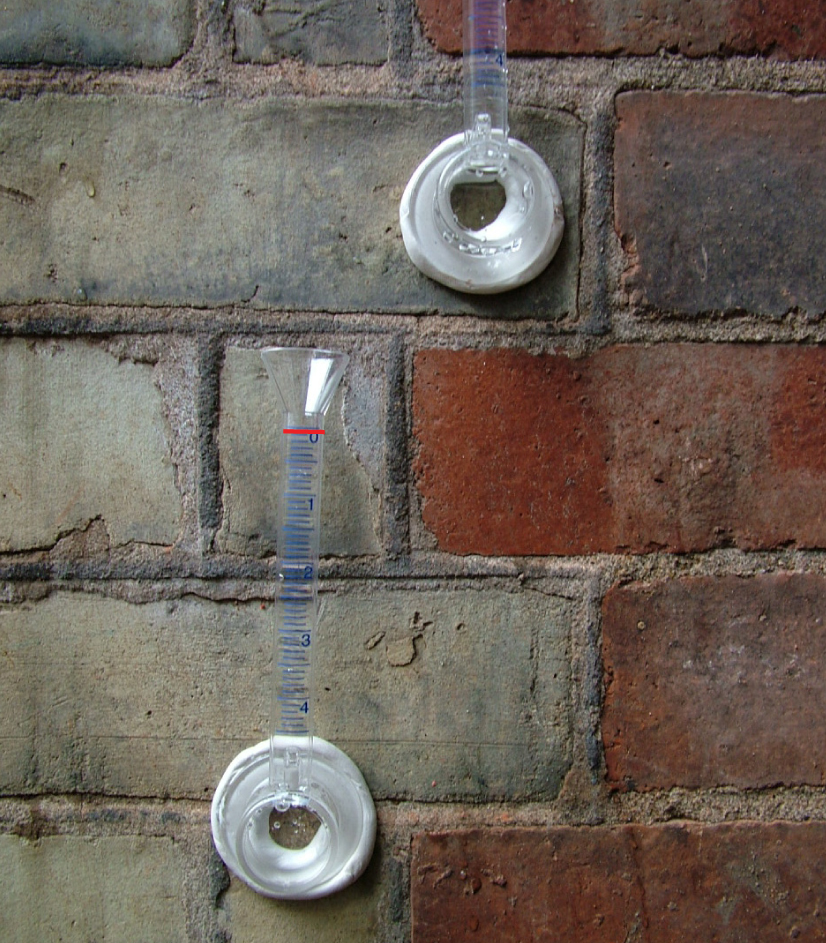At one of our low energy refurbishment projects, Dyne Road, bere:architects carried out a masonry permeability test before installing internal insulation, in order to check whether the brickwork needs protection against penetration of outside moisture. Without such a check, there is a risk of serious fabric problems resulting from the work.
The Karsten Tube test showed that the yellow bricks used in the front walls of the house were highly porous. This result warned us that the addition of internal insulation in these areas was unsuitable unless the porosity of the brickwork was at the same time reduced. If internal insulation had been installed without reducing the porosity of the brickwork, there was a likelihood of long term fabric moisture problems, since the comfort and cost saving benefits of reduced heat leakage through the brickwork would have had the detrimental effect of reducing the drying out of the highly absorbent, wet brickwork during the winter months. In the summer the vapour drive tends to be from outside to inside so that would not have been very helpful if the brickwork had become highly saturated during the winter. If the porosity of the brickwork had not been reduced, the result would almost certainly have been a year-by-year increase in fabric moisture, reducing the benefits of the internal insulation and eventually causing more serious problems.
To ensure the long-term benefits of the internal insulation and avoid the pitfall of fabric moisture problems, bere:architects specified a high quality, breathable (vapour permeable but moisture impermeable) masonry protection cream produced by a company called Stormdry. This was applied in November 2011. Bere:architects recently carried out a second test of the masonry to test the effectiveness of the Stormdry masonry protection cream.
The purpose of the recent test was to determine the effectiveness of the Stormdry product 2 months after application, compared to the previous test carried out in November 2011 on the untreated brickwork.
Bere:architects used a Karston tube penetration test which consists of a tube filled with water, bonded to the wall with plasticine. Over a measured period of time, the water is absorbed into the wall. A graduated scale measures the amount of water absorbed by the brickwork.

The image above shows the tests carried out on the yellow brick at the front of the site. The yellow brick was rough and had many more cracks and imperfections. The image below shows the tests performed on the NE side on the white bricks.

The tests were carried out for up to 60 mins depending on the rate of absorption observed. Measurements were taken at intervals of 5mins for the first 15mins and then 15mins and 30mins for the last two readings.
The tests showed that the cream reduced the porosity of the yellow brick to 1/6th of its untreated porosity.
Stormdry’s literature states that the product will improve in performance as it cures over a period of a year or so. We therefore intend to repeat the test in June 2012 and again next winter in order to measure the improvement.
For more details please read the attached report produced by bere:architects.
CONCLUSION:
(1) This report demonstrates an important check that is required in correctly specifying internal insulation.
(2) This study is of importance to people who are proposing to add internal insulation to old or historic buildings, where external insulation may not be allowed or may be considered unsuitable. The conservation architect lobby often wrongly claims that historic buildings cannot be insulated and should be left un-insulated. It is correct to say that if internal insulation is specified wrongly, it will lead to damage. However, if specified correctly, damage will not occur, and occupants and the environment will benefit.
(3) The suitability of insulation design solutions can also be supported by calculations using advanced long term moisture analysis software, such as WUFI.
(4) It should be noted that internal insulation is very much a second-best solution compared to external insulation. External insulation is much more effective in terms of performance and it is cheaper, less disruptive to occupants and significantly reduces lifecycle maintenance costs compared to internal insulation (eg avoiding the need for brickwork re-pointing and avoiding seasonal fabric expansion and contraction that is particularly problematic in long brickwork terraces or 'row housing'). However in the UK there is currently considerable resistance to the use of external insulation on existing buildings from planners and even from many architects, on aesthetic grounds. In such cases, internal insulation can be a very good 'second best' solution.
(5) If designed and installed correctly, insulation is in the long term best interests of the building occupants. If heating cannot be afforded then lack of insulation may leave occupants cold, uncomfortable and suffering from damp. Structural degredation of the fabric can also be caused by condensation in un-insulated buildings. In our view insulating a building should be standard practice in all major refurbishments of old or historic buildings and we do not know of any technical conditions that would prevent insulating a historic building - we believe that a technically sound solution can always be found.